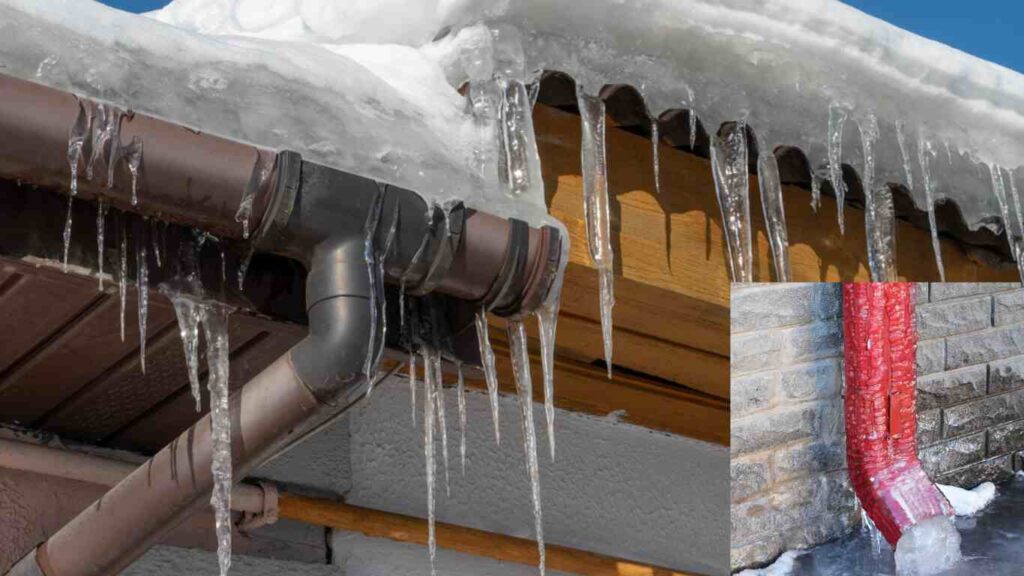Winter can be a magical time of year—snow-covered rooftops, cozy evenings by the fire, and the joy of the holiday season. But lurking behind this picturesque winter scene is a hidden danger that many homeowners overlook: frozen gutters leaking into the house. While icicles hanging from your roof may look charming, they can be a sign of a much larger issue that could lead to costly damage to your home.
By the end, you’ll be equipped to safeguard your home from the damaging effects of ice and water during the winter months.
What are Frozen Gutters?
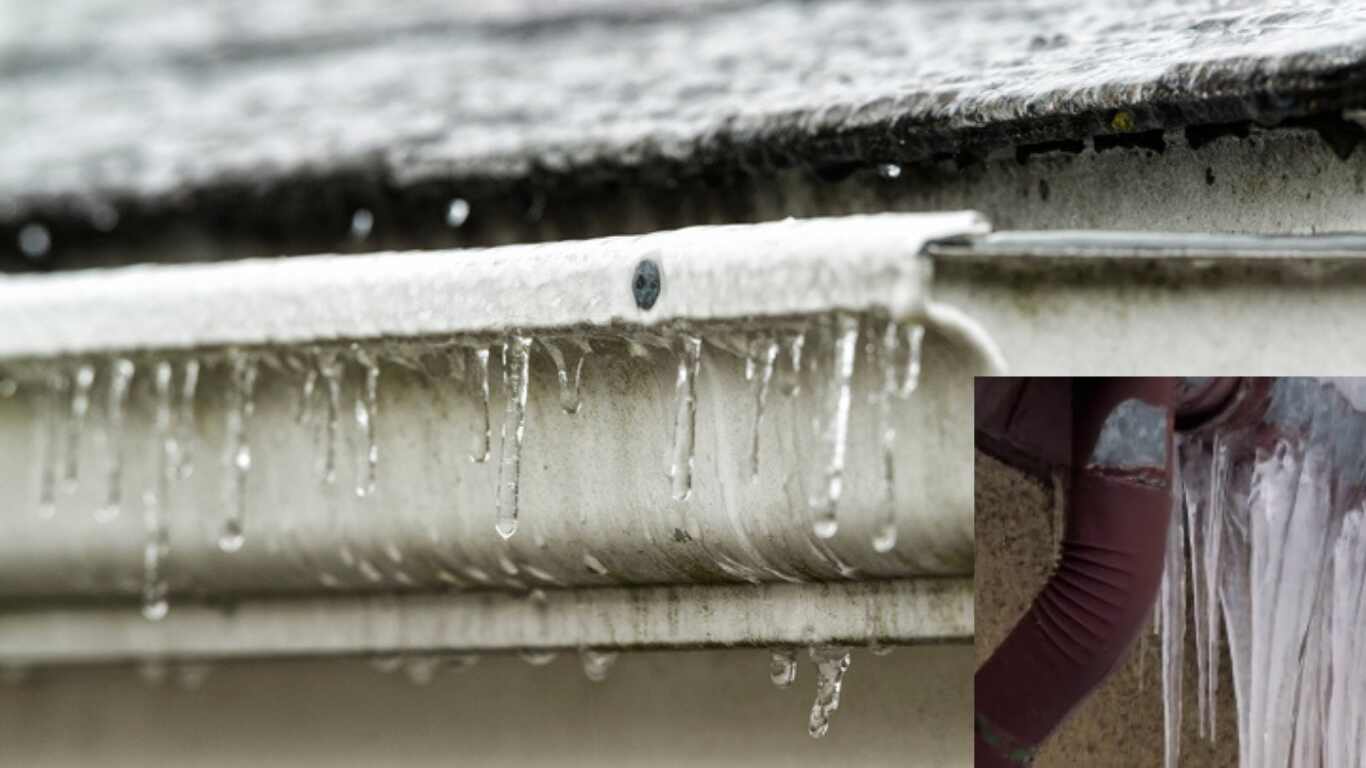
Frozen gutters are exactly what they sound like. When temperatures drop below freezing, water inside your gutters solidifies into ice. This seemingly small issue can escalate into significant problems for homeowners.
How Do Gutters Freeze?
Gutters freeze when water from melting snow or rain doesn’t drain properly and is left to sit in the gutter system. As temperatures dip, this stagnant water turns into ice. The following cycle makes frozen gutters more likely:
- Melting Snow: Snow on your roof melts due to heat escaping from your home or warmer daytime temperatures.
- Refreezing: The melted water flows into the gutters, where it refreezes as the sun sets and temperatures drop.
- Ice Build-Up: Over time, this process leads to the formation of ice dams and blockages in the gutters.
The Role of Ice Dams
Ice dams are thick ridges of ice that form along the edge of a roof. They prevent melting snow from draining properly, causing water to back up and seep under shingles. This can lead to leaks, structural damage, and other issues inside your home.
Did you know? Ice dams are one of the leading causes of frozen gutters leaking into houses. Their formation is often tied to poor attic insulation and inadequate ventilation.
The Dangers of Frozen Gutters
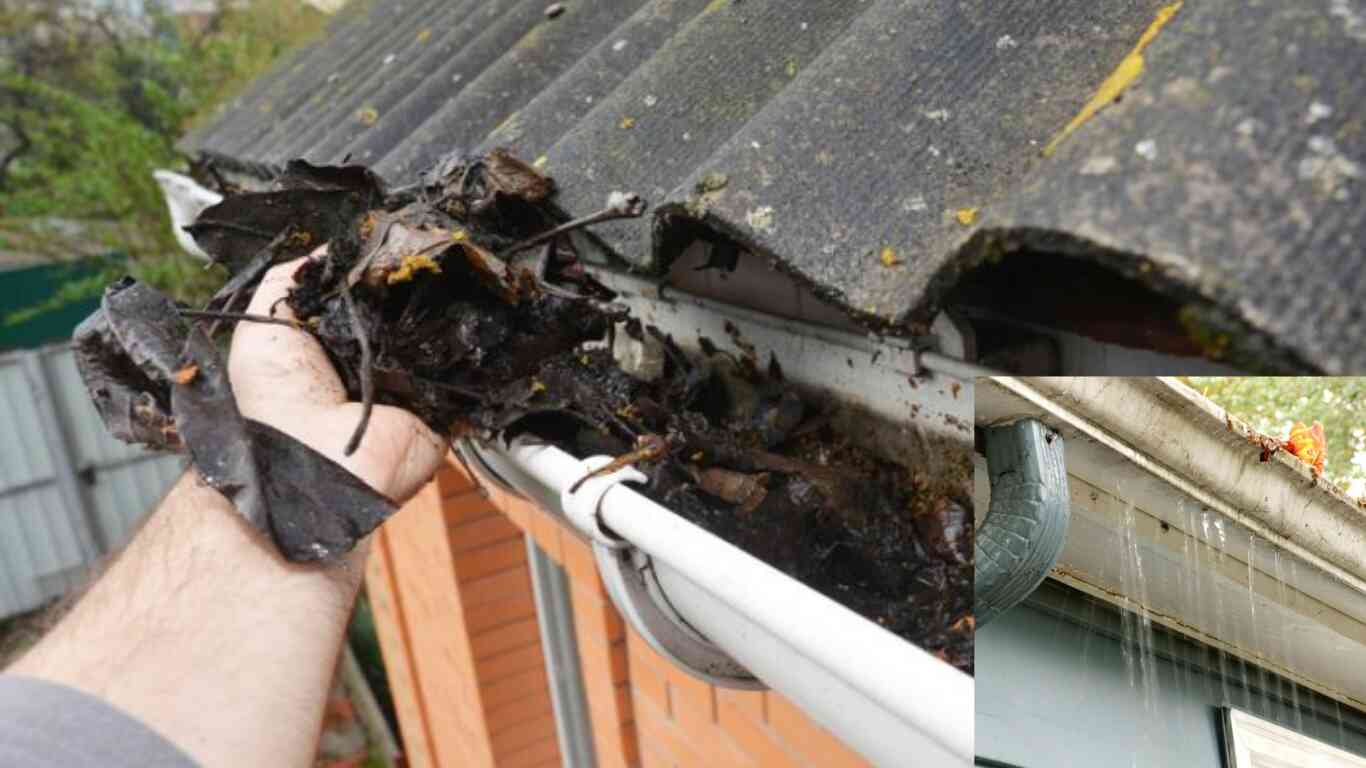
Frozen gutters might seem harmless at first glance, but they can lead to a variety of problems that affect your roof, walls, foundation, and even personal safety.
Roof Damage
One of the most common issues caused by frozen gutters is damage to your roof. Here’s how it happens:
- Water Back-Up: Ice dams prevent water from draining, forcing it to back up under your shingles.
- Shingle Damage: As water freezes and expands, it can loosen shingles, creating gaps for more water to enter.
- Leaks: Over time, this water infiltration can lead to leaks, resulting in costly repairs if left unaddressed.
Wall and Ceiling Issues
When water leaks past your roof, it often finds its way into the walls and ceilings of your home. This can cause:
- Unsightly Stains: Water stains on ceilings and walls that are difficult to remove.
- Peeling Paint: Moisture causes paint to bubble, crack, and peel away.
- Mold and Mildew Growth: Damp conditions create the perfect environment for mold, which can pose health risks to your family.
Foundation Trouble
Blocked gutters force water to spill over the sides, pooling around the foundation of your home. This can lead to:
- Basement Flooding: Water seeping into basements or crawl spaces.
- Foundation Cracks: Over time, excess water can weaken the foundation, causing cracks and structural instability.
- Erosion: Soil around your home’s foundation can erode, leading to uneven settling.
Weakened Gutters
Gutters are not designed to bear the weight of heavy ice. When frozen, they can:
- Bend or sag under the pressure.
- Detach from the roof entirely, requiring costly replacements.
- Damage fascia boards and soffits, adding to repair expenses.
The Hazard of Falling Ice
Fluctuating temperatures can cause icicles and chunks of ice to form along the edge of your gutters. These pose serious safety risks:
- Injury: Falling icicles can harm people and pets walking underneath.
- Property Damage: Ice falling from heights can damage vehicles, outdoor furniture, or landscaping.
How Frozen Gutters Lead to Leaks
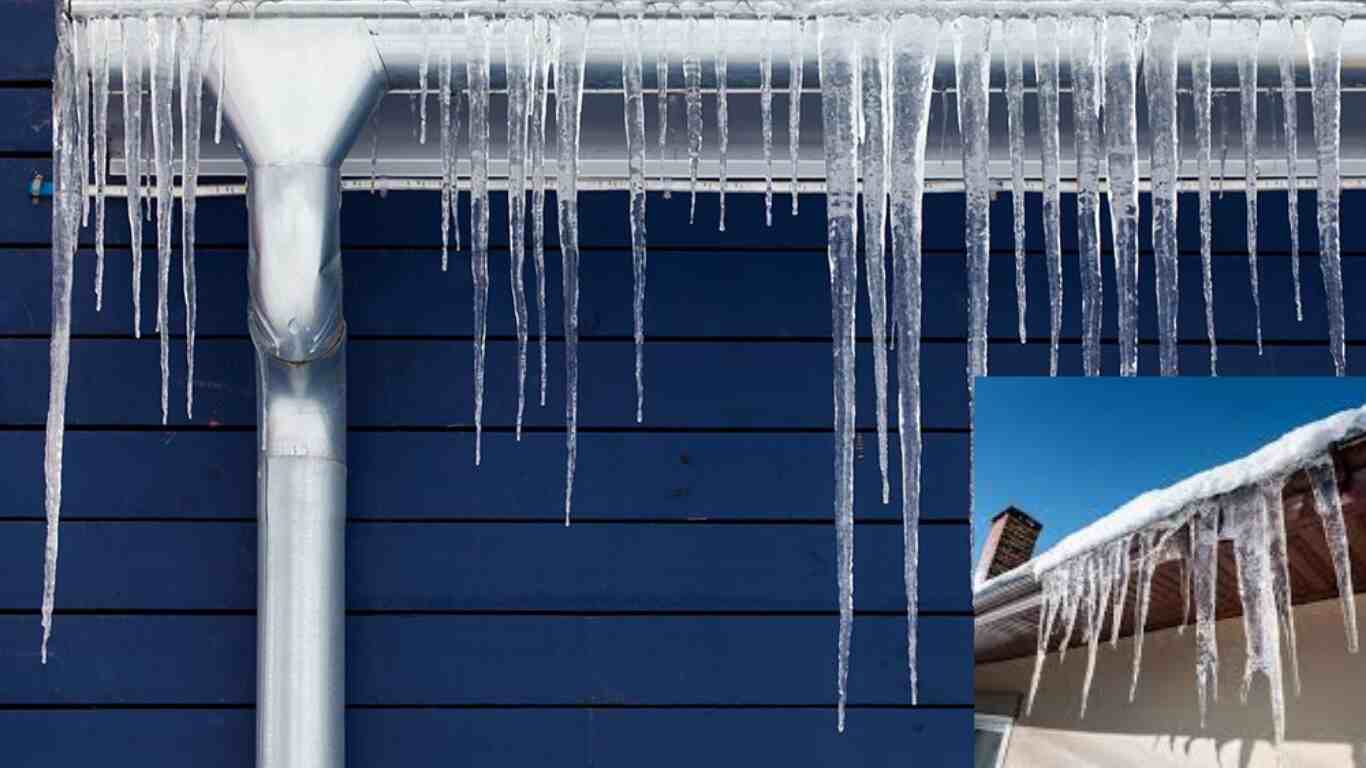
The connection between frozen gutters and leaks inside your home is straightforward yet often underestimated. Here’s a closer look at how this happens:
The Path of Water
When ice dams form in the gutters, they create a barrier that prevents water from draining properly. With nowhere else to go, the water:
- Backs up onto the roof.
- Seeps under shingles.
- Travels down through walls and ceilings.
- Reaches the foundation, potentially causing widespread damage.
Amplified Damage Over Time
What starts as a small leak can quickly escalate into a more severe issue if ignored. Continuous exposure to water can weaken structural components of your home, leading to rot, mold, and expensive repairs.
Pro Tip: Regular inspections during winter can help you catch leaks early, saving you money and stress in the long run.
Preventing Frozen Gutters
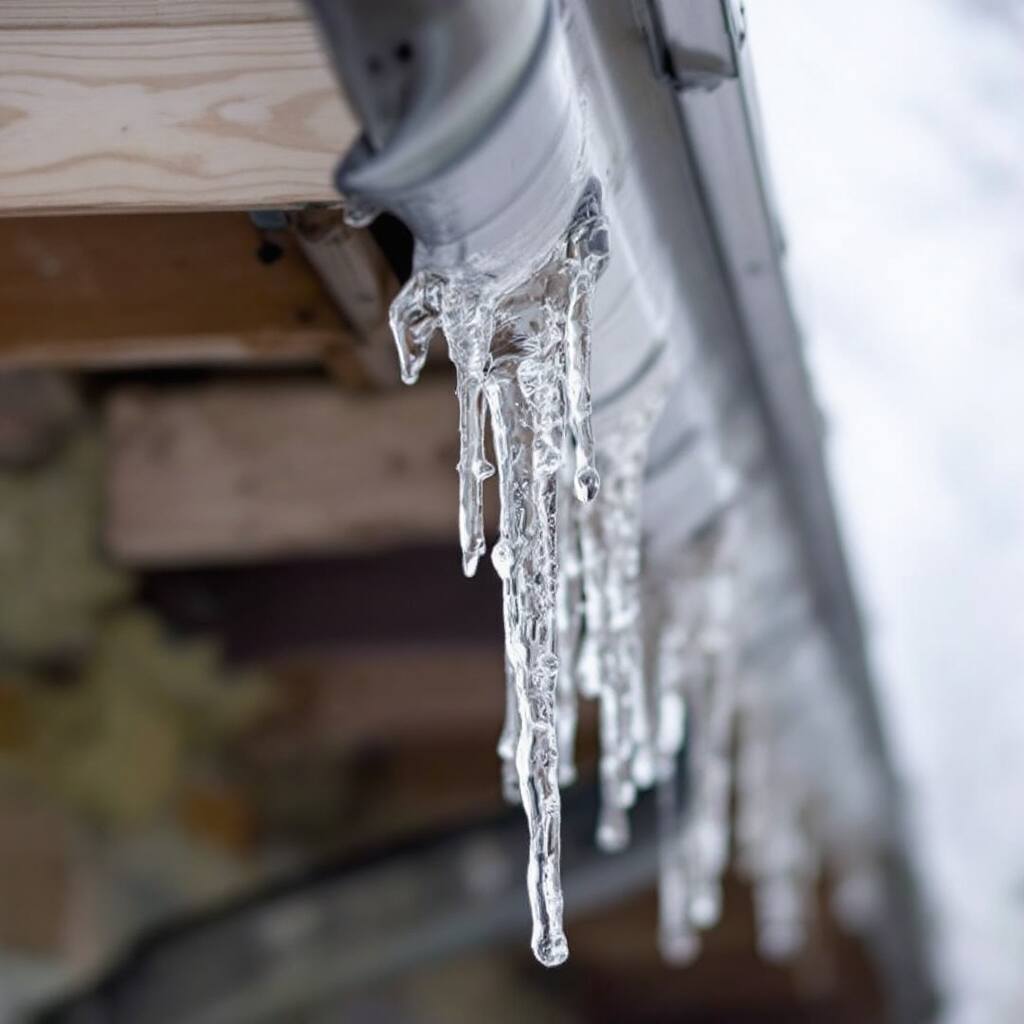
The good news is that frozen gutters and their associated risks can often be prevented with proactive measures. Here are some strategies to keep your gutters—and your home—safe during the winter.
Regular Cleaning and Maintenance
- Why It’s Important: Clogged gutters are more likely to freeze because debris traps water.
- How to Do It: Clean your gutters at least twice a year—once in the fall after the leaves have dropped and again in late spring.
Gutter Protection Systems
Investing in gutter guards or covers can help prevent debris buildup and improve water flow. Some systems even include heating elements that keep ice from forming.
Insulation and Ventilation
Preventing heat from escaping your home is key to avoiding ice dams. Focus on:
- Attic Insulation: Upgrade insulation to prevent heat loss.
- Ventilation: Ensure proper airflow to regulate attic temperature.
| Problem | Solution |
|---|---|
| Ice Dams | Better insulation and ventilation |
| Clogged Gutters | Regular cleaning or gutter guards |
| Heavy Ice Formation | Heated gutter systems |
Helmet Heat® Ice Reduction System
Modern heating systems like Helmet Heat® are designed to provide continuous, gentle warmth to gutters and downspouts. This prevents ice buildup while ensuring efficient water drainage.
Professional Inspections
Hiring a professional to inspect your gutters before winter can identify potential issues and ensure your system is ready for the cold weather.
DIY Solutions vs. Professional Help
When dealing with frozen gutters, you may wonder whether to handle the issue yourself or call in the pros. Here’s a quick comparison:
DIY Options
- Safe Methods: Use de-icing products like calcium chloride to melt ice.
- Precautions: Avoid using sharp tools that could damage your gutters.
When to Call a Professional
- Severe ice dams or structural damage.
- Persistent leaks despite DIY efforts.
- Sagging or detached gutters.
Cost vs. Benefits
While DIY methods may save money upfront, professional services often provide long-term solutions that reduce repair costs in the future.
Also read (amie obrien house.)
